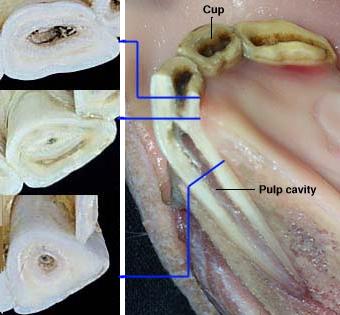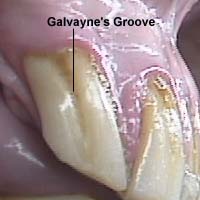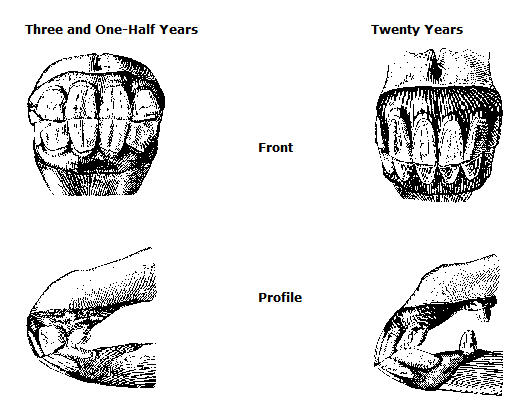http://www.ecmagazine.net/images/sp04/teeth3.jpg
The incisors erupt from the center of the mouth to sides from around age 2 1/2 to age 4 1/2, twelve in all. These teeth have cups in the top that gradually wear smooth and lighten, then disappear, in a specific order age the horse ages.
 |
| image from www.vivo.colostate.edu |
 |
| Age of disappearance of cups. |
.
 | ||||
| An example of teeth at 7 and 10 years. |
After age 11 all of the cups have disappeared so you have to use the angle of the teeth and Galvayne's groove to make an estimate. Galvayne's groove is a dark groove that forms in the upper corner incisor teeth.
 |
| Image from www.vivo.colostate.edu |
It starts growing from the gumline at about age ten and reaches halfway down the tooth at about age fifteen. (This is how I would know Casey is fifteen if I didn't have his papers.) In another five years, at age twenty, the groove should reach the bottom of the tooth. At age twenty the groove also starts to recede from the gum line, is halfway gone at age twenty-five and completely gone at around thirty years of age. If you can't find a groove, you can judge by the angle of the teeth whether the horse is ten or thirty. The more severe the angle and longer the tooth, the older the horse!
So now you know where the terms "long in the tooth" and "never look a gift horse in the mouth" come from!


No comments:
Post a Comment